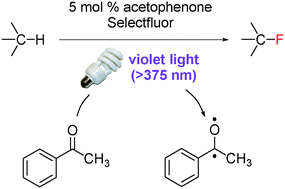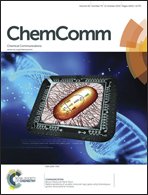Visible light-promoted metal-free sp3-C–H fluorination†
Abstract
Photoexcited acetophenone can catalyze the fluorination of unactivated C(sp3)–H groups. While acetophenone, a colorless oil, only has a trace amount of absorption in the visible light region, its photoexcitation can be achieved by irradiation with light generated by a household compact fluorescent lamp (CFL). This operational simple method provides improved substrate scope for the direct incorporation of a fluorine atom into simple organic molecules. CFL-irradiation can also be used to promote certain classic UV-promoted photoreactions of colorless monoarylketones and enones/enals.


 Please wait while we load your content...
Please wait while we load your content...